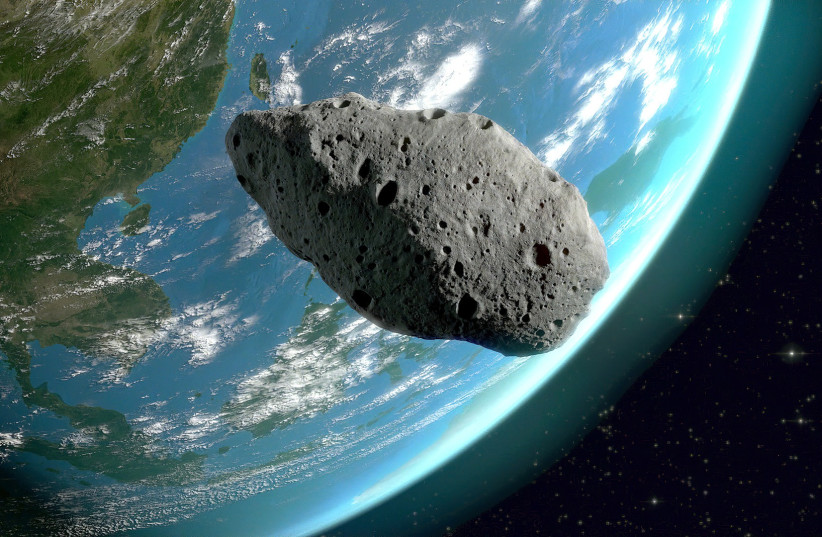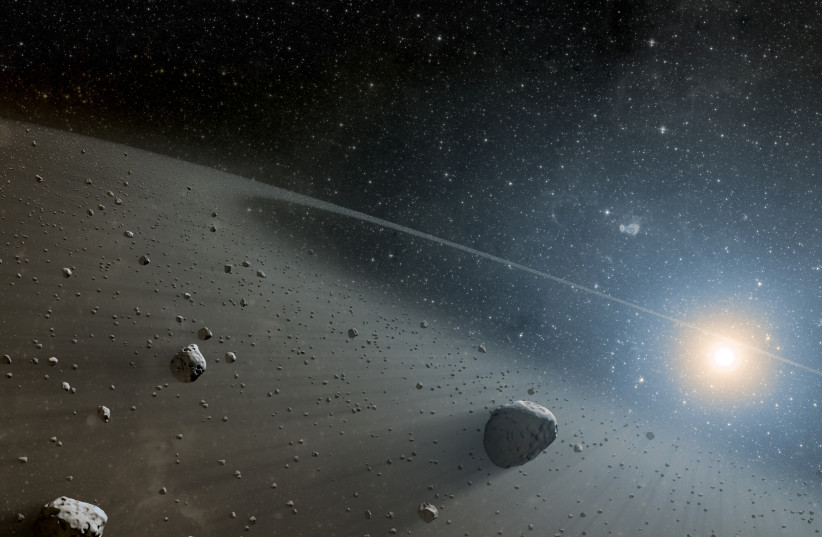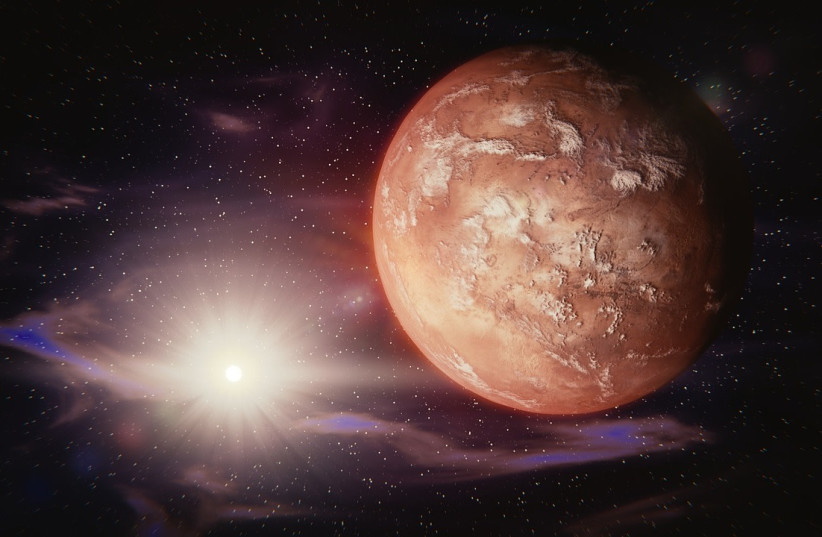Asteroids can be pushed to Earth for mining with 2 spacecraft - study
The "pitcher" and "catcher" spacecraft model will allow asteroids to quickly be pushed towards Earth for mining with high efficiency and without the need for costly return trips.

Scientists are working on a model that would help them essentially catch an asteroid using two spacecraft, bringing it closer to Earth to mine it for all it's worth, according to a recent academic study.
The findings, published in the peer-reviewed academic journal Acta Astronautica, present a method that could help humanity make use of the many resource-rich asteroids that inhabit the solar system around us.
Not only that, but it can also present a more efficient method than current spacecraft missions that have taken samples from asteroids.
Asteroids: A metaphorical goldmine of space resources
There are thought to be well over one million asteroids currently inhabiting the solar system, most of which tend to be in the asteroid belt between Jupiter and Mars.
However, there are tens of thousands of asteroids whose orbits bring them close to Earth. These asteroids, known as Near Earth Objects (NEOs) or Near Earth Asteroids (NEAs), are said to number at least 26,000 and they have been the subject of considerable concern in recent years.

This is due to fears of an asteroid impact — something that is understandable, considering how absolutely devastating such an impact might be. In fact, an asteroid impact has been argued to be a massive natural disaster that could occur on Earth.
But asteroids present far more than just danger. In fact, asteroids can also provide many benefits to humanity in the form of resources - something that could be exploited by asteroid mining.
Now, this in and of itself isn't surprising. Asteroids are, essentially, rocky remnants of the formation of the solar system. Sometimes called minor planets, these rocks are made of various materials and minerals from those early days.
They contain a wide host of minerals and materials, many of which can also be found on Earth. And that means they can be mined.
This is something humanity has, more or less, known for thousands of years, with some civilizations during the Bronze Age having used crashed meteorites as sources of iron and nickel.
According to asteroid expert Dr. David Polishook of Israel's Weizmann Institute of Science, the three most important resources on asteroids are strong metals like iron and nickel; rare metals like platinum and iridium; and water. The latter, too, is unsurprising and it has long been known that water and ice can be found on many asteroids.
But regardless, the presence of these resources has long made asteroid mining an attractive possible commercial field.
However, despite this interest and despite a few efforts having been made in the past, asteroid mining has never gotten off the ground.
This is due to a number of reasons but the biggest would be actually reaching an asteroid with a spacecraft and miners and then bringing everything back.
Currently, missions have been sent to take samples from asteroids. These include the Hayabusa and Hayabusa2 missions from the Japan Aerospace Exploration Agency (JAXA) and NASA’s ongoing Origins, Spectral Interpretation, Resource Identification, Security-Regolith Explorer (OSIRIS-REx) mission. Hayabusa managed to bring back a sample from 25143 Itokawa, Hayabusa2 brought back a sample from 162173 Ryugu and OSIRIS-REx is currently bringing back a sample from 101955 Bennu.
But these are difficult missions since these asteroids are so far away. There needs to be a way to make things easier in order for this to get off the ground.
Well, according to this study, scientists may now have a way.
 CURRENTLY, 1,113,527 asteroids are known to exist in the solar system. (credit: Wikimedia Commons)
CURRENTLY, 1,113,527 asteroids are known to exist in the solar system. (credit: Wikimedia Commons)
The study

The idea behind the study is that rather than deal with the complexities of sending spacecraft to asteroids and then dealing with a long return trip, this would bring the asteroids closer to Earth.
This is done via the efforts of two spacecraft, one that would act as a "pitcher" and another that would act as a "catcher."
The actual mechanics involved are rather complicated and use some complex mathematical rocket science principles and calculations, but here is a heavily simplified description.
The pitcher spacecraft, which ostensibly could also be used in asteroid deflection — the idea of pushing an incoming asteroid out of the way to avert an impact, which NASA is currently testing through its Double Asteroid Redirection Test (DART) Mission - would essentially be used to push asteroids closer to Earth. The catcher spacecraft would be waiting by Earth and would then catch them. Now that they're closer to Earth, they could be mined.
What makes this better than other asteroid mining ideas?
According to the study, it could be done in rapid succession.
There is no reason the pitcher spacecraft would have to necessarily return to Earth after hitting an asteroid towards us. As such, more and more asteroids could be brought closer to Earth, which in turn could mean we'd have a more reliable way of mining them.
And fuel wouldn't even be that much of an issue. After all, asteroids also have water — this could be broken down into oxygen to help astronauts breathe, and into hydrogen that can be used as fuel.
The authors behind the study have run numerous calculations supporting their plan, and while it is very complicated and there are a number of variables to be factored in, it still could work.
Having said that, though, the big advantage of the two spacecraft models hinges on the asteroids being brought to Earth's orbit for mining.

Why is that necessary?
While there are tens of thousands of NEAs that could be brought closer to Earth, the most valuable and resource-rich asteroids are still in the main Asteroid Belt.
So what if instead of using the Earth's orbit, we used Mars?
There is considerable precedence to this idea, and the idea of using Mars and its moon Phobos as a sort of base for asteroid mining in the Asteroid Belt was put forth in a study published earlier this year in the peer-reviewed academic journal Planetary and Space Science.
It isn't clear if it will overlap fully, and a number of further studies and simulations will need to be done to better ascertain the validity of both pushing asteroids closer to Earth and the many issues surrounding asteroid mining in general.
But it still remains something that is, technically speaking, very much feasible and comes with the potential to bring huge profit and mitigate the many severe environmental damages brought by iron mining on Earth.
And with the field of space commercialization only continuing to grow, the possibilities for the future remain far more grounded than before.
Please recommend this page & follow the Sputniks Orbit


No comments:
Post a Comment